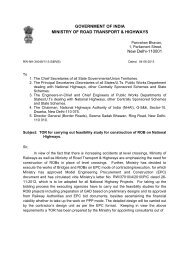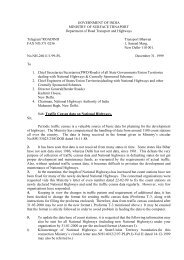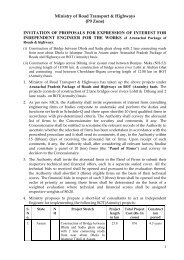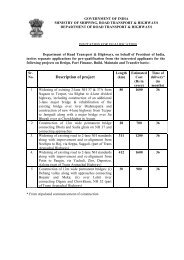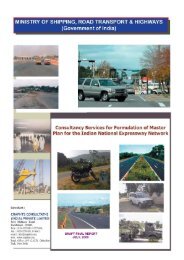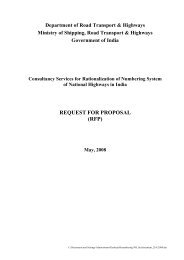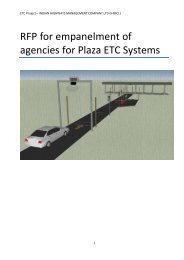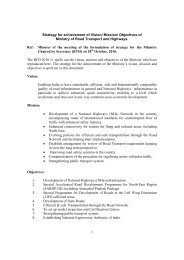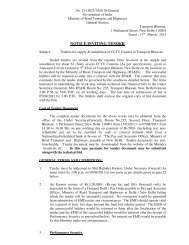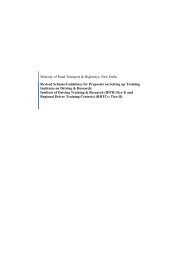Indian Raod cngress
Indian Raod cngress
Indian Raod cngress
You also want an ePaper? Increase the reach of your titles
YUMPU automatically turns print PDFs into web optimized ePapers that Google loves.
Section 1900<br />
Structural Steel<br />
All structural steel members and parts shall have straight edges and blunt surfaces. If<br />
necessary, they shall be straightened or flattened by pressure unless they are required to<br />
be of curvilinear forms. They shall also be free from twist. Pressure applied for straightening<br />
or flattening shall be such as would not injure the materials. Hammering shall not be<br />
permitted. Adjacent surfaces or edges shall be in close contact or at uniform distance<br />
throughout.<br />
The Contractor shall submit his programme of work to the Engineer for his approval at<br />
least 15 days before the commencement of fabrication. This programme shall include the<br />
proposed system of identification and erection marks together with complete details of<br />
fabrication and welding procedures.<br />
The Contractor shall prepare shop drawings for fabricating any member and obtain approval<br />
of the Engineer before the start of work. Complete information regarding the location,<br />
type, size and extent of all welds shall be clearly shown on the shop drawings. These<br />
drawings shall distinguish between shop and field welds.<br />
1904.2 Preparation of Edges and Ends<br />
All structural steel-parts, where required, shall be sheared, cropped, sawn or flame cut<br />
and ground accurately to the required dimension and shape.<br />
End/edge planning and cutting shall be done by any one of the following prescribed methods<br />
or left as rolled :<br />
a) Shearing, cropping, sawing, machining, machine flame cutting.<br />
b) Hand flame cutting with subsequent grinding to a smooth edge.<br />
c) Sheared edges of plate not more that 16 mm thick with subsequent<br />
grinding to smooth profile, which are for secondary use such as<br />
stiffeners and gussets.<br />
If ends of stiffeners are required to be fitted, they shall be ground, so that the maximum gap<br />
over 60 percent of the contact area does not exceed 0.25 mm.<br />
Where flame cutting or shearing is used, at least one of the following requirements shall be<br />
satisfied.<br />
a) The cut edge is not subjected to applied stress.<br />
b) The edge is incorporated in weld.<br />
c) The hardness of cut edge does not exceed 350 HV30.<br />
d) The material is removed from edge to the extent of 2 mm or minimum<br />
necessary, so that the hardness is less than 350 HV 30.<br />
6



